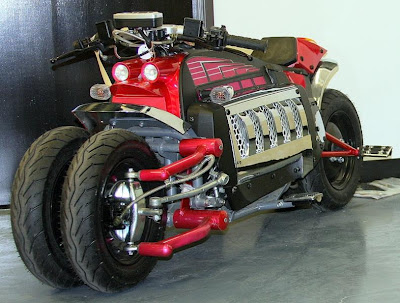2010
2 January 2010 – Three accidents involving five trains took place in Uttar Pradesh due to dense fog conditions.[10][11][12][13]
The first accident took place near the town of Etawah, about 170 miles (270 kilometers) southwest of Lucknow, the capital of Uttar Pradesh state, when the Lichchavi Express entering the station rammed into the stationery Magadh Express train stopped there. Ten people, including the driver of one of the trains, were injured.
In a second similar Gorakhdham Express and Prayagraj Express collided near the Panki railway station in Kanpur, about 60 miles (100 kilometers) southwest of Lucknow, and left five people dead and about 40 others injured.
Another accident has been reported from Pratapgarh, 61 km from Allahabad. The Sarayu Express broke into a tractor trolley at an unmanned railway crossing leading to the accident. Though nobody is injured following the incident, the engine of the train is severely damaged.
3 January 2010 – All seven coaches of the Arunachal Pradesh Express, running between Murkongselek and Rangiya, derailed at a place between Helem and Nij Bogaon in Assam in the early hours, but none of the passengers were hurt.[14]
16 January 2010 – Three people died and around a dozen were injured when two express trains(The Kalindi Express and Shram Shakti Express) collided in thick fog in India's northern state of Uttar Pradesh on Saturday, 16 January 2010. The accident happened near Tundla, 25 kilometres from Agra, when the driver of one of the trains apparently did not react to a signal, slamming his train into another on the same track.[15][16][17][18]
17 January 2010 – Two persons were killed and four others injured when their car was hit by a train at an unmanned crossing on Sunday afternoon in Barabanki district. The accident happened when the Lucknow–Sultanpur Harihar Nath Express hit the car at Barha railway crossing under Haidergarh police station area. Two persons traveling in the car died on the spot while the four others who sustained serious injuries have been referred to Trauma Centre in Lucknow. Train traffic on this route was disrupted for nearly two hours after the accident. This is the fifth accident in series of similar train accidents.[19][20]
22 January 2010 – A goods train derailed near Azamgarh in Uttar Pradesh on Friday, disrupting rail traffic in the region, officials said. No one was injured. The accident took place at Sathiyaon station near Azamgarh, some 300 km from here, when three bogeys of the goods train derailed, an official said. Traffic was disrupted on the busy Varanasi-Azamgarh-Gorakhpur route.[21]
8 May 2010 – The Visakhapatnam - Secunderabad/Hyderabad 2727 Godavari Express escaped from a mishap, as the engine loses the link between the coaches, the driver/Trainman informs the railway station about the detachment and joins the coaches once again, the train safely arrives at the secunderabad railway station on Saturday morning (May 8, 2010)
25 May 2010 – A Rajdhani Express train travelling from Delhi to Guwahati derailed in Naugachia, Bihar at IST 6:40 am (UTC+5:30).[22] All passengers survived and 11 sustained minor injuries.[23] The train derailed as the driver applied emergency brakes after listening to a loud explosion nearby. Currently, no Maoists link is being indicated. There were no casualties reported as the coaches did not fall off the tracks. All passengers were taken from the train. The injured were treated by the medical officials present on the spot.The derailment halted all railway traffic in the Delhi–Guwahati line. While five passenger trains, including the Tatanagar–Chapra Express, have been cancelled, at least three express trains have been diverted. These include the Awadh Assam Express, Mahananda Express and the Barmer–Guwahati Express.[24] A special 17-coach train was sent to take the 986 passengers on board the derailed train to their destinations.
28 May 2010 – West Bengal, the Gyaneshwari Express train derailment, a suspected attack by Communist Party of India (Maoist) kills at least 170 people when the Mumbai-bound Howrah Kurla Lokmanya Tilak Gyaneshwari Super Deluxe Express is derailed by an explosion (or by a sabotage) between Khemashuli and Sardiha in West Midnapore district at 1:30 AM midnight, and then struck by a goods train.[25]
4 June 2010 – Mini bus was hit by the Coimbatore–Mettupalayam special train at an unmanned level-crossing at Idigarai near Coimbatore on Friday. Five people were killed in the accident.[26]
18 June 2010 – At least 27 persons were injured, two of them critically, when the 8084 Amaravati Express from Vasco-da Gama to Howrah derailed near Koppal (Karnataka) after ramming into a road-roller at an unmanned level crossing.[27]
19 July 2010 – Sainthia train collision occurred in Sainthia, West Bengal, India, when the Uttar Banga Express collided with the Vananchal Express. Casualties stand at 63 people dead[28] and more than 165 people injured, with many still trapped in wreckage[29][30][31]
17 August 2010 – Four people got killed in a train accident which occurred on Faizabad-Lucknow rail-section at Goryamau railway station of Barabanki district located between Rudauli and Rozagaon towns.[32]
24 August 2010 – Two persons escaped with minor injuries when the four-wheeler on which they were travelling was hit by a speeding train coming from Lucknow and going towards Sultanpur) at an unmanned railway crossing under Gosainganj police station in Lucknow district.[33]
20 September 2010 – 33 died and over 160 injured when a speeding freight train going towards Indore, Madhya Pradesh collided with the Indore - Gwalior Intercity Express at Badarwas, Shivpuri, Madhya Pradesh. The freight was in a real blast over 70 km/h. The collision was so hard that the locomotive of the Intercity Express remained on same place and the coaches behind it jumped over it. It is said[by whom?] that the locopilot of the freight overshot the signal and pointsman was unable to divide the loop line from the main line and the freight went on the same line where Intercity Express was standing.[citation needed]
21 September 2010 – Five wagons of a goods train derail between Phaphund and Kanchausi near Kanpur on the Kanpur-Tundla section at about 8:20am Tuesday morning. Following the incident, the electric supply to the over head equipment is cut off so that the movement of trains is stopped. Railway traffic on the down line is restored at about 3:50pm while traffic on the up line is restored at about 3:10pm.[34]
24 September 2010 – At least 12 people were injured when the engine and a bogie of the Kasganj-Lucknow Rohilkhand Express derailed near Kasganj railway station early Friday. The train derailed at 5:30 am while passing through a culvert near Kasganj in Kanshi Ram Nagar district.[35]
4 October 2010 – A goods train heading from Lucknow to Moradabad, derailed near Rasoiya station in Uttar Pradesh's Bareilly district, some 200 km from Lucknow derailed. Rail traffic on the busy Delhi-Lucknow route was disrupted. Two wagons of the train derailed and damaged the railway tracks. This affected movement of several long and short distance trains. No casualty was reported.[36]
[edit] 2011
1 January 2011 – Amritsar-Sealdah Akaltakth Express rammed into two trucks in Uttar Pradesh's Jaunpur district when its driver failed to notice the red signal at a level crossing at Babura railway crossing, killing a man (a truck driver) and leaving two people (another truck driver and a helper) injured. No passengers were injured in the collision.[37]
3 January 2011 – Four wagons of a goods train got derailed in the Dadri area of Ghaziabad district of Uttar Pradesh on 3 January 2011. The goods train was going towards Aligarh from Delhi when the mishap occurred. No one was injured in the accident but the running of trains on the busy section was disrupted. Train traffic on the Ghaziabad-Aligarh section on the Delhi-Howrah trunk route was disrupted following the derailment.[38]
April 18, 2011 – Three coaches of the Mumbai - Delhi Rajdhani Express caught fire near Ratlam district in Madhya Pradesh. The train, carrying nearly 900 passengers caught fire while running between Bikramgarh Alot and Phuria stations in Kota division. The coaches were removed from the train and the fire was put out quickly. No passenger was harmed. [39]
May 16, 2011 – Just after midnight May 15, a truck on the rail cum road bridge of Rajahmundry fell onto the railway lines. An incoming high speed goods train powered by a WAG 9 smashed into the truck destroying it and the railway tracks there. Due to it, several trains between Vijayawada Junction and Visakhapatnam Junction were delayed for more than 05:30 hours. Trains were held up at Nidadavole, Samalkot and Kaikaluru.[40]
July 07, 2011 – A Mathura Chhapra Express train rams into a bus carrying wedding guests around 2 a.m. at an unmanned railway crossing in Thanagaon, Kanshiram Nagar district, Uttar Pradesh, killing 38 and injuring 30.[41]
July 10, 2011 – Kalka Mail derails near Fatehpur, Uttar Pradesh killing 70 people and injuring more than 300.[42][43]
July 10, 2011 – The engine along with 4 coaches of Guwahati Puri Express derails between Rangiya and Ghagrapar, Nalbari district, Assam at 8:10 PM, & capsized in a rivulet. The Cause of the disaster presumed to a sabotage to the track with explosives by local millitants. IED wires were found near the accident spot.[44]
July 12, 2011 - New Delhi-Patna Rajdhani Express's generator coach caught fire near outskirts in New Delhi Railway Station. However, No one was injured in the mishap. The reason for this was ascertained.[citation needed]
July 22, 2011 - Two wagons of a goods train carrying cement bags derailed near Rambagh railway station under NER zone on Friday morning, no casualties reported.[45]
July 23, 2011 - Less than 24 hours after a goods train derailed in Uttar Pradesh's Allahabad district, eight wagons of another goods train on Saturday jumped tracks at almost the same place where the first incident took place.[46]
July 31, 2011 – The engine and some coaches of the Guwahati Bangalore Express derail and are hit by another train in Malda district, West Bengal. At least three people are killed and 200 injured.[47]
September 2, 2011 - Two bogies of a goods train were damaged and three others derailed after it was hit by a rail engine near the rail yard in Whitefield railway station in Bangalore on Friday.[48]
September 13, 2011 - A Chennai suburban MEMU train rammed into a stationary Arakonam-Katpadi passenger train at around 9.30 PM. Ten people were killed and many injured. It happened between Melpakkam and Chitheri Station in Vellore district. The passenger train was waiting for the signal. In the impact eight coaches were derailed and 3 were completely damaged.[49]
November 22, 2011 - Howrah-Dehradun express train caught fire- 7 burnt to death. It was around 2.30am when coach number B1 of the Dehradun-bound train caught fire. Later, the fire spread to coach B2. Both coaches were badly burnt, but all the casualties were from B1.[50]
List of Indian rail incidents - Wikipedia, the free encyclopedia












 Tafseel se batao na?????
Tafseel se batao na?????







